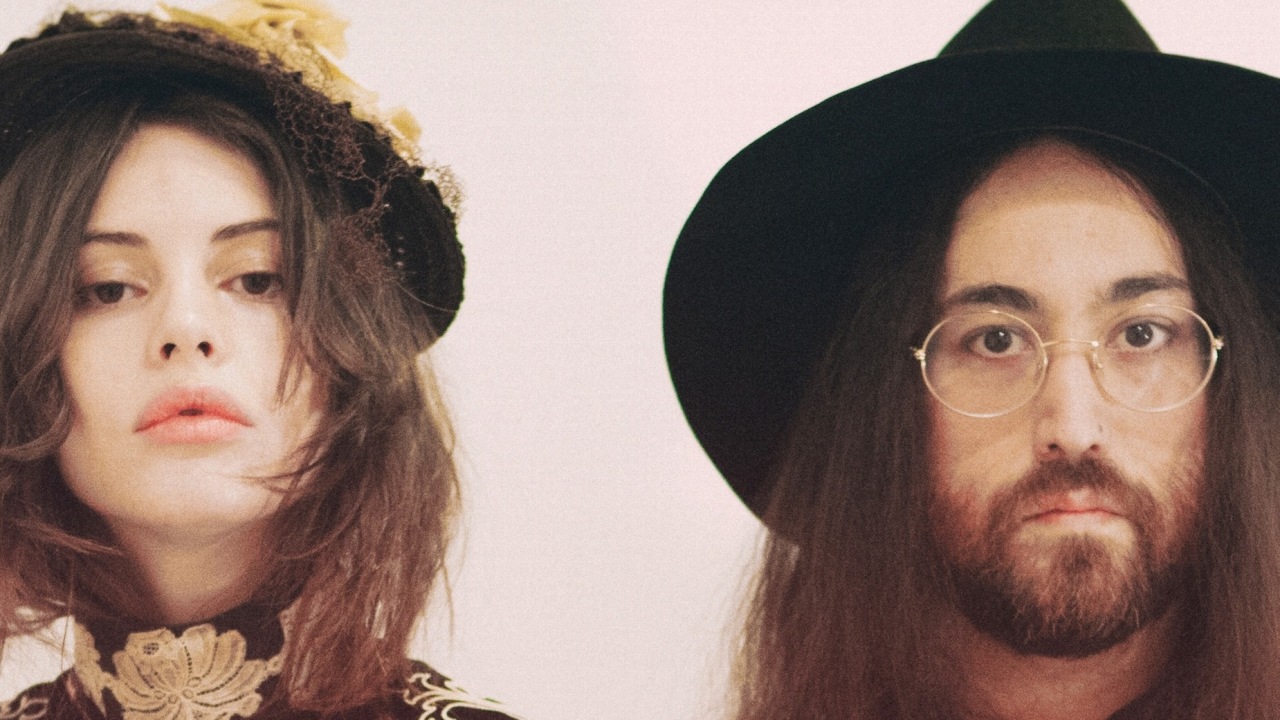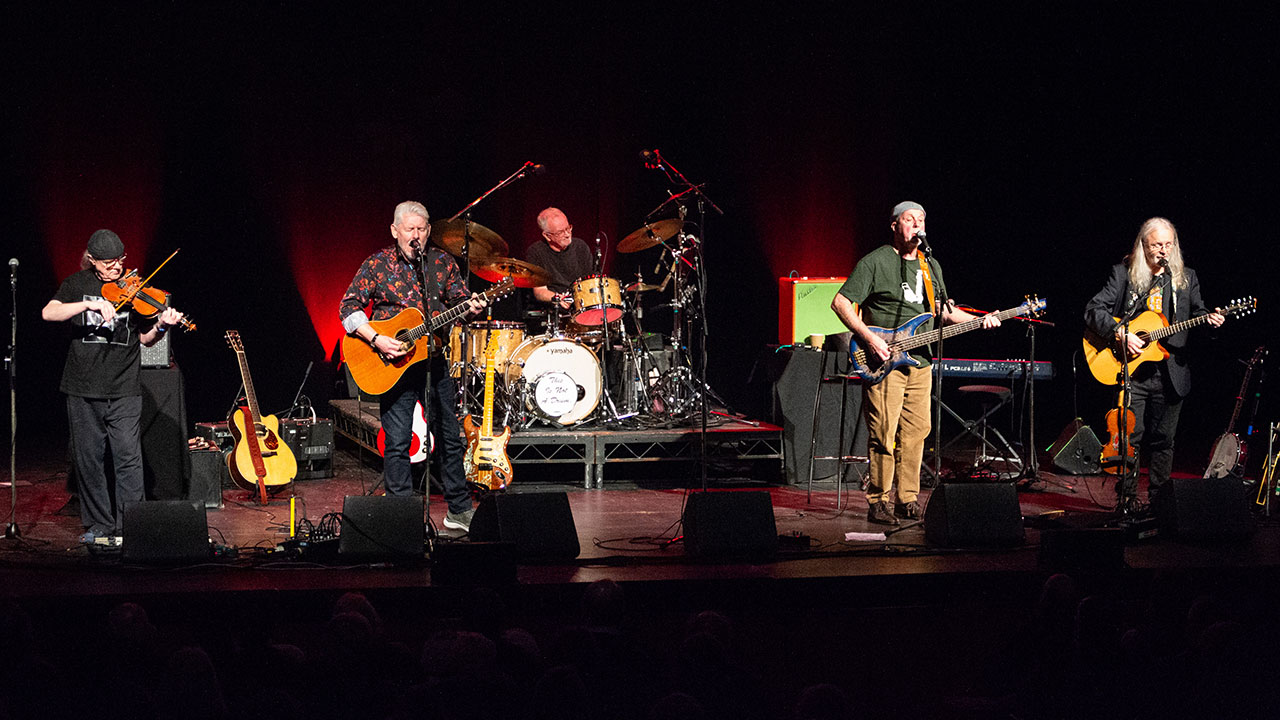Grrrreat Expectations
Three albums into Sean Lennon's avant-psych project with his partner Charlotte, The Ghost Of A Saber Tooth Tiger is ready to roar once again.

In October 1984, for his ninth birthday, Sean Lennon was presented with a new computer by Apple co-founder Steve Jobs. “It was the first Macintosh model,” he recalls, speaking to Prog down the line from his studio in New York. “I remember Andy Warhol drawing a circle on the MacPaint program. Keith Haring was there too and Andy just kept saying [affects soft voice]: ‘Look Keith, I made a circle!’ We were all just mesmerised. It was like we were looking at the fucking Ark of the Covenant or something.”
It’s a story that Lennon tells almost reluctantly, prefacing it by saying that he doesn’t want to sound like a name‑dropper. It’s also one that serves to illustrate that no matter how hard he may try to downplay his famous heritage, his has never been an ordinary life.
It can work both ways, of course. On one hand, he’s the heir of a reported $60 million estate left by his father, ensconced in a four-floor townhouse in Greenwich Village and free to do whatever he likes without worrying too much about the bills. The downside is that whatever he does will inevitably be measured against the legacy of his parents, John Lennon and Yoko Ono.
It’s a fact he’s only too aware of, though he insists a musical career was unavoidable. “Music was always a part of my life from the earliest age, so it was never really a choice,” he says. “It was just sort of, ‘This is what you do when you’re a Lennon.’ My earliest memories are of my mum at the piano and my dad on the guitar. And being in the studio with them while they made Double Fantasy.”
Lennon Jr’s first foray into recording came in 1981, just months after his father’s murder, when the then five-year-old recited the story Even When You’re Far Away for Yoko’s Season Of Glass. He continued collaborating with his mother through his teens, before forming the band IMA with friends Sam Koppelman and Timo Ellis. The latter went on to join him in experimental US-Japanese combo Cibo Matto, while 1998 saw Lennon uncork his first album released under his own name, Into The Sun.
That’s when the critical backlash began. He’s likened the experience to being “thrown to the sharks”, the result being that Lennon gave up on a solo career and decided to concentrate on being a sideman. It was another seven years before he made a tentative return with second album Friendly Fire.
By then he’d become involved with model Charlotte Kemp Muhl. In 2008 their union doubled as a musical one when they formed The Ghost Of A Saber Tooth Tiger, named after a short story Muhl wrote as a child. “We basically shared the same tastes and that’s what brought us together in the first place,” Lennon says, “whether it was film or books or places or people. On a musical level, we both loved everything from Syd Barrett’s solo records to spectral composers like [György] Ligeti. It felt like we were almost telepathic in the beginning, like we had twin stars in orbit. Now our relationship has grown, but when we met it felt like we were really trying to fuse galaxies, colliding into one thought pattern.”
Sign up below to get the latest from Prog, plus exclusive special offers, direct to your inbox!
Lennon’s cosmic allusions are a pretty good descriptor for GOASTT. The music they make together evokes both the pillowy French pop of the 60s and the more celestial adventurism of Pink Floyd; proggy psychedelia with pastel tones of British folk, as well as the more lysergic end of Barrett or early Soft Machine.
Alongside Muhl’s soft purr, Lennon’s voice carries the imprint of his father’s. However, perhaps it’s Yoko’s love of the avant-garde, as borne out by GOASTT’s ‘anything goes’ approach – reflected in their adoration of bygone experimentalists Os Mutantes and White Noise – that seems to run deepest.
2010 debut Acoustic Sessions was, as the title suggests, a fairly minimal affair. “It was never meant to represent a sound,” explains Lennon. “It was really supposed to be a document or photograph of a moment, of songs that were unrealised. That was really the whole point: look, we’ve met, fallen in love, written all these songs and this is what they look like naked and without production.”
Now the full flowering of GOASTT has been signalled by its follow-up, Midnight Sun. Swimming with spacey synths, distorted guitars and bucolic woodwinds, the album is rich in both sound and detail. Eastern scents waft through the grooves of Xanadu, the ghost of Kevin Ayers stalks the yellow brick roads of Last Call and there’s a deliciously wobbly feel to the dayglo aesthetic of Animals. The video for the latter, incidentally, is a bonkers spoof on 60s polygamist cult The Source Family.
Experiments abound. On Don’t Look Back Orpheus, the duo brought in a 19th-century calliope, a huge air-powered organ commonly used in carnivals. “It came with a very loud sort of diesel engine,” says Lennon, “which was so fucking loud that we had to remove it. The first time that we were recording, it sounded like there was a motorcycle gang surrounding this organ, so we had to replace it with a modern air compressor.”
Other techniques included strapping guitars to drum kits and running the vibrations through delay pedals. “I’ll try anything. I’ve done lots of crazy shit. I think of it almost as wizardry; it’s sonic alchemy. You’re just trying to see if the spirits of the demons will co-operate with you. Then they come and sometimes it’s exciting.”
More than anything, Midnight Sun feels as though Sean Lennon has finally found his true métier. The act of making music also serves a deeper, more spiritual purpose: it’s his way of communicating with his late father.
“There’s no other way to describe it as my missing him,” he says. “Playing music is the closest I can come to having him in my life. It gives me a sense of feeling him and represents him to me. Music is my dad’s domain and I know that. That’s why I’m doing it.”
Midnight Sun is out now via Chimera Music. See www.thegoastt.com for more information.
Freelance writer for Classic Rock since 2008, and sister title Prog since its inception in 2009. Regular contributor to Uncut magazine for over 20 years. Other clients include Word magazine, Record Collector, The Guardian, Sunday Times, The Telegraph and When Saturday Comes. Alongside Marc Riley, co-presenter of long-running A-Z Of David Bowie podcast. Also appears twice a week on Riley’s BBC6 radio show, rifling through old copies of the NME and Melody Maker in the Parallel Universe slot. Designed Aston Villa’s kit during a previous life as a sportswear designer. Geezer Butler told him he loved the all-black away strip.

